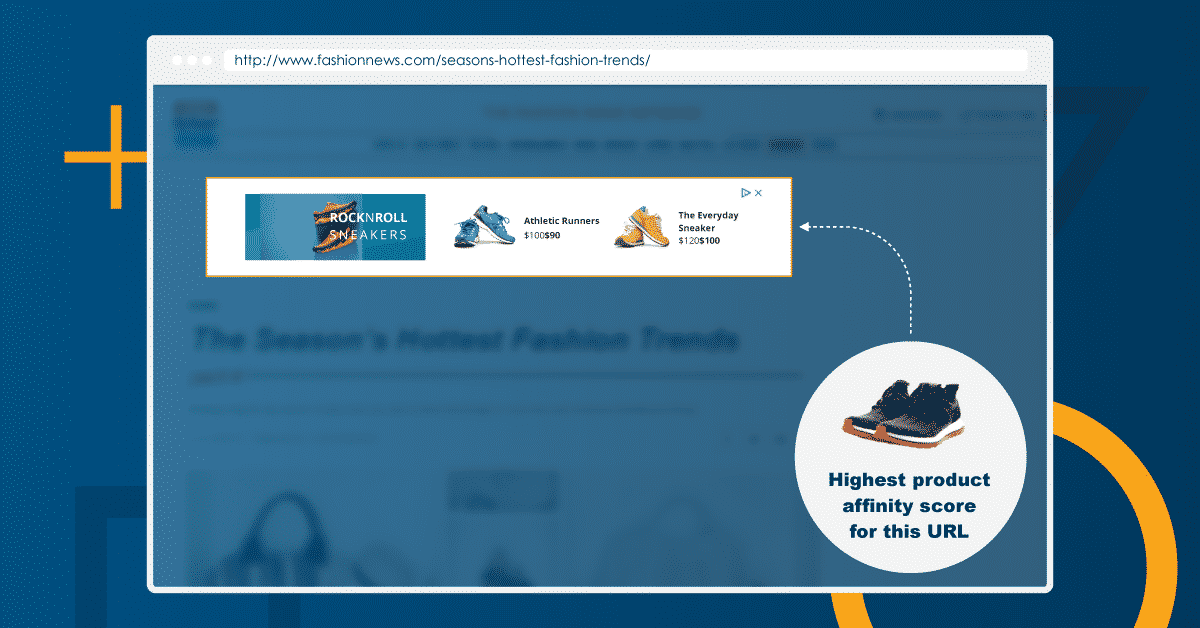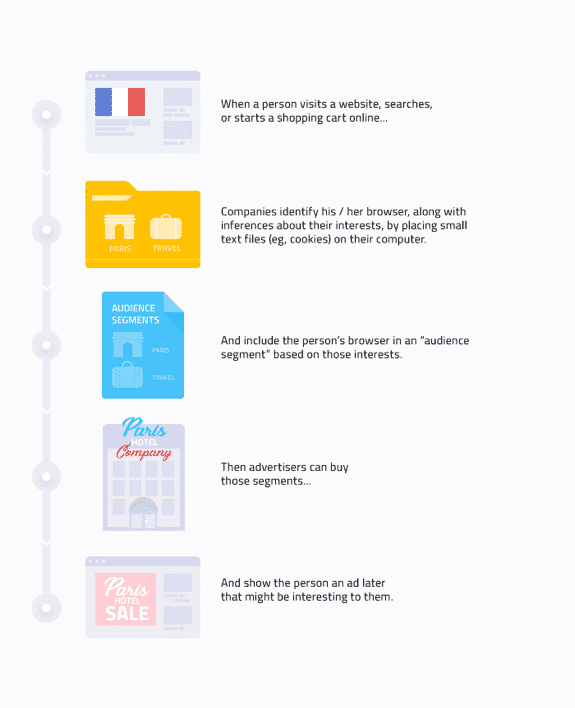Years ago, the question of whether to put your budget against contextual targeting or behavioral targeting was a spirited debate. Some said contextual targeting should step aside for the newer, more personalized behavioral targeting. Others purported that it wasn’t a question of “either or” at all, and that both should be used as complementary tactics. More than a decade later, the question still gets asked. The answer, as is the case with most marketing issues, is “it depends”. To help you arrive at an answer, let’s dig into what each type of targeting means.
What is contextual targeting?
Contextual advertising is a strategy where ads are displayed based on the content a user is viewing. By analyzing the keywords, topics, and overall context of a webpage or app, relevant are served that align with the theme of the content.
For instance, an ad for running shoes might appear on a fitness blog, or a kitchen tools ad could show up on a recipe website. This method makes ads more relevant to users’ interests without relying on personal data, improving engagement and user experience.
Semantic targeting is a more advanced form of contextual targeting, using machine learning to understand the full meaning of a webpage’s content rather than simply identifying matching keywords.
Here’s how it works:
- A crawler scans the web and categorizes pages based on context and semantics.
- When a user visits a page, that page content information goes to the ad server, which then matches it with relevant ads for the keywords and content
The better your system is at understanding the true context of a page, the better your ad matching will be. Here’s an example of a contextually targeted ad for skincare products next to an article about makeup.

The most recent iteration of contextual advertising can also use first-party data to add commerce signals to contextual signals and build product affinity scores for each URL, so that marketers can zero in on the pages and products that will have the most impact.

In light of the fact that third-party cookies are being phased out in the near future, contextual targeting has gained renewed attention because it doesn’t rely on cookies. To learn more, read Contextual Targeting in 2021: Everything You Need to Know Before Cookies Disappear.
What is behavioral targeting?
Behavioral targeting is the practice of segmenting customers based on web browsing behavior, including things like pages visited, searches performed, links clicked, and products purchased. If you add mobile and physical store data into the mix, that can also include things like location, and in-store purchases. Visitors with similar behaviors are then grouped into defined audience segments, allowing advertisers to target them with specific, relevant ads and content based on their browsing and purchase history.
With behavioral targeting, shopper behavior and purchase intent can be combined to deliver highly relevant, highly personalized ads just at the moment when a shopper is most likely to make a purchase. An oft cited example of behavioral targeting is retargeting ads.

Contextual vs Behavioral Targeting: Which one is the best?
Contextual targeting places ads based on webpage content, ensuring relevance without using personal data. In contrast, behavioral targeting uses a user’s browsing history and behavior to serve personalized ads. While contextual targeting is privacy-friendly, behavioral targeting focuses on personalization to predict purchase intent.
Both methods aim to increase ad relevance, with contextual being privacy-friendly and behavioral offering more personalization.
With this being said, they’re both worth testing as part of your digital marketing mix. You knew we’d say that, right? As AI and Big Data continue to advance, and the marketing landscape continues to change, each is evolving to offer more capabilities to advertisers. Using both contextual and behavioral targeting together can help create a more holistic approach and reach shoppers in different ways at different points in their journey.





















